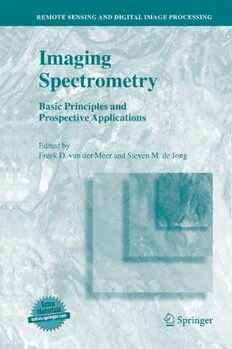
Imaging Spectrometry: Basic Principles and Prospective Applications PDF
428 Pages·2002·12.448 MB·English
Most books are stored in the elastic cloud where traffic is expensive. For this reason, we have a limit on daily download.
Preview Imaging Spectrometry: Basic Principles and Prospective Applications
Description:
A significant step forward in the world of earth observation was made with the development of imaging spectrometry. Imaging spectrometers measure reflected solar radiance from the earth in many narrow spectral bands. Such a spectroscopical imaging system is capable of detecting subtle absorption bands in the reflectance spectra and measure the reflectance spectra of various objects with a very high accuracy. As a result, imaging spectrometry enables a better identification of objects at the earth surface and a better quantification of the object properties than can be achieved by traditional earth observation sensors such as Landsat TM and SPOT. The various chapters in the book present the concepts of imaging spectrometry by discussing the underlying physics and the analytical image processing techniques. The second part of the book presents in detail a wide variety of applications of these new techniques ranging from mineral identification, mapping of expansive soils, land degradation, agricultural crops, natural vegetation and surface water quality. Additional information on extras.springer.comSample hyperspectral remote sensing data sets and ENVI viewing software (Freelook) are available on http://extras.springer.com
See more
The list of books you might like
Most books are stored in the elastic cloud where traffic is expensive. For this reason, we have a limit on daily download.
